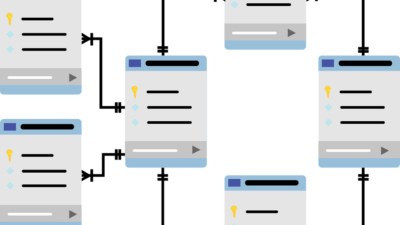This two-part series introduces five of the 10 most common AI risks and how to mitigate them.
AI functionality is increasingly a component of digital transformation projects. Delivering AI functionality adds business value to digital transformation. However, engineers will encounter multiple AI risks in these projects. Engineers can use these risk topics as a helpful starter list for their digital transformation project risk register. Here are the first five of the ten most common AI risks and how to mitigate them.
An inaccurate opportunity statement
The risk of an inaccurate opportunity statement is surprisingly common because many projects are initiated based on a symptom statement that has not been sufficiently analyzed to identify the root problem. The likelihood of digital transformation success is low if the project team attacks an inaccurate business problem or opportunity statement. An inaccurate opportunity statement can waste a lot of money.
Business teams can quite easily reduce this risk by asking more in-depth questions to illuminate the problem. That in-depth analysis is inexpensive and will lead to a more accurate opportunity statement, a successful project and an optimum solution.
A business problem or opportunity statement should be supported by:
- A list of alternatives for addressing the situation.
- A preliminary list of expected tangible and intangible benefits.
- An initial list of roles for the project organization.
- An order of magnitude cost projection.
- An initial list of project assumptions and risks.
No amount of AI technical wizardry can compensate later for a poorly understood business problem.
Insufficient data
Data insufficiency is likely the highest risk of all the AI application risks.
Business teams can address the data insufficiency risk by:
- Adding to the digital data sources they employ so that they are sufficient in number and richness to support the AI model comprehensively.
- Developing enough rich synthetic training data to ensure model accuracy.
- Evaluating the risk of data preparation, sampling, and splitting introducing hallucinations or bias.
Data insufficiency occurs when the data available to build the AI model does not contain enough breadth and depth for the application. It reduces the reliability of AI responses and increases the probability of hallucinations.
Misuse of AI technology
Given all the buzz and excitement around AI technology advances, it’s easy to understand that organizations will want to apply AI solutions to their digital transformation problems. This enthusiasm creates a risk that organizations will misuse AI technology when a simpler, faster, cheaper alternative would have been sufficient.
Business teams can easily reduce this misuse risk by evaluating credible alternatives such as data analytics, simulation, a software package or classical custom software development.
AI technology is a summary term for systems and processes that perform tasks requiring human intelligence with varying levels of sophistication. Example tasks include data analysis, decision-making, problem-solving, self-correction, and learning. AI systems incorporate some or all of these technologies:
- Natural Language Processing (NLP).
- Machine Vision.
- Speech Recognition.
- Robotics.
A mushy tangible AI benefits estimate
To approve a digital transformation project, most organizations require an estimate of the net tangible business benefits for the project. Multiple unknowns at the beginning of an AI project create a risk of a mushy or low-confidence estimate of tangible benefits.
Business teams can reduce this risk by conducting a proof of concept first to solidify the business case, re-estimate the benefits and confirm the contemplated AI solution.
Estimating benefits is more difficult for AI projects because of uncertainties such as the following:
- Required AI expertise.
- Opportunities created by rapid advances in AI tools and services.
- Eventual project costs that resolving data-related issues will incur.
- Likely adoption rate of new AI functionality.
- Extent of business impact with adoption.
Tangible business benefits are defined as benefits that can be quantified with a reasonable level of confidence. Intangible benefits cannot be quantified.
Inadequate data quality
Inadequate data quality found in the data sources for the AI application creates a risk of project failure. Inadequate data quality discovered during digital transformation reduces the reliability of AI outputs and increases the frequency of hallucinations.
Business teams can better understand their data quality risk by profiling the data to identify the actions required to improve the data quality. Improvement actions will require significant effort to:
- Correct historical data inaccuracies and gaps.
- Implement process improvements to enhance future data quality as it is collected.
Data quality is defined by:
- Accuracy – few invalid or misleading values.
- Completeness – few nulls or missing rows.
When engineers proactively identify and mitigate AI risks in their digital transformation projects, they will deliver the planned business benefits.



